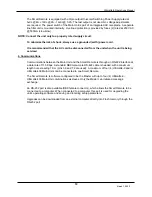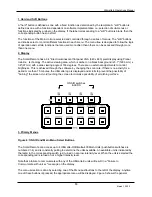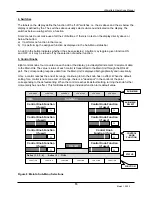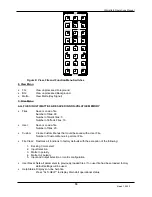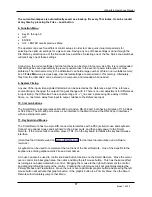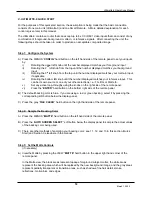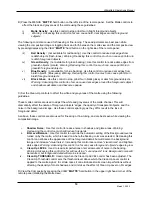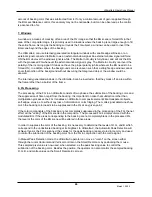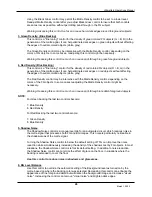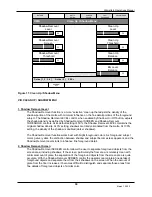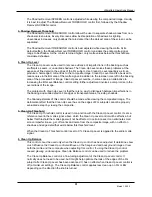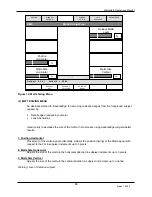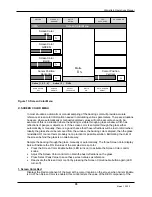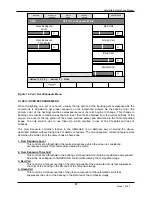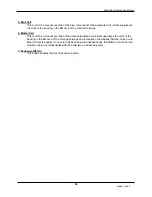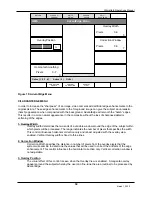
Ultimatte-9 Operations Manual
March 1, 2000
24
amount of backing color that was subtracted from it. If only a minimal amount of gain is applied through
the BG Level Balance control, this anomaly may not be noticeable, but it can be observed as the control
is advanced too far.
7. Windows
A window is a means of masking off an area of the FG image so that the BG scene is forced ON in that
area of the composite image. It is primarily used in situations where the backing is not large enough to fill
the entire frame. As long as the backing surrounds the FG subject, a window can be used to insert the
BG scene beyond the edges of the backing.
The Ultimatte-9 can use internally generated rectangular windows with variable edge softness, or an
external signal connected to Matte In as an external window signal. An external window signal will force
ON the BG wherever the window signal is white. The Matte In circuitry is fully linear, and will mix the BG
with the processed FG whenever the external window signal is gray. The Matte In circuitry can invert the
polarity of the incoming signal if it does not have the proper polarity (white wherever the BG needs to be
forced ON). In addition, where the background scene is uneven such that a straight edge window cannot
cover that portion of the background without obscuring the foreground object, the window could be
skewed.
The internally generated windows in the Ultimatte-9 can be inverted so that they mask off an area within
the frame rather than a border of the frame.
8. FG Processing
The processing of the FG in an Ultimatte consists of two phases: the subtraction of the backing color, and
the suppression of flare or spill from the backing. It is important to notice that subtraction rather than
multiplication processes the FG. It enables an Ultimatte to composite elements like transparent objects,
soft edges, smoke, etc. without any loss of information or color fringing. The matte signal determines how
much the backing color needs to be suppressed in the FG at any given point.
If the color components of the backing are not completely suppressed in the processing of the FG, the net
effect will be "veiling" of the BG scene in the composite. The processed FG is simply summed with the
modulated BG. If the areas corresponding to the backing are not completely black in the processed FG,
the level or the color of the BG scene will be altered in those areas.
In order to suppress the color of the backing, it is necessary to determine the levels of R, G, and B which
correspond to the unobstructed backing at its brightest. In Ultimatte-9, the Automatic Peak Detection will
achieve this. As the FG is scanned, the values for the peak backing area are stored in memory and used
to control the subtraction of the backing color from the FG in conjunction with the matte signal.
In Manual Peak Detection mode, the Ultimatte-9 operator can move a "cursor" on the screen either
through the cursor Horizontal and Vertical controls on the Smart Remote or by positioning the mouse.
This sampled pixel value is now used, when selected, as the peak backing value to control the
subtraction of the backing color. Besides the position, the operator can also monitor the
sampled backing
R, G, B, and matte values on the Smart Remote EL screen.

